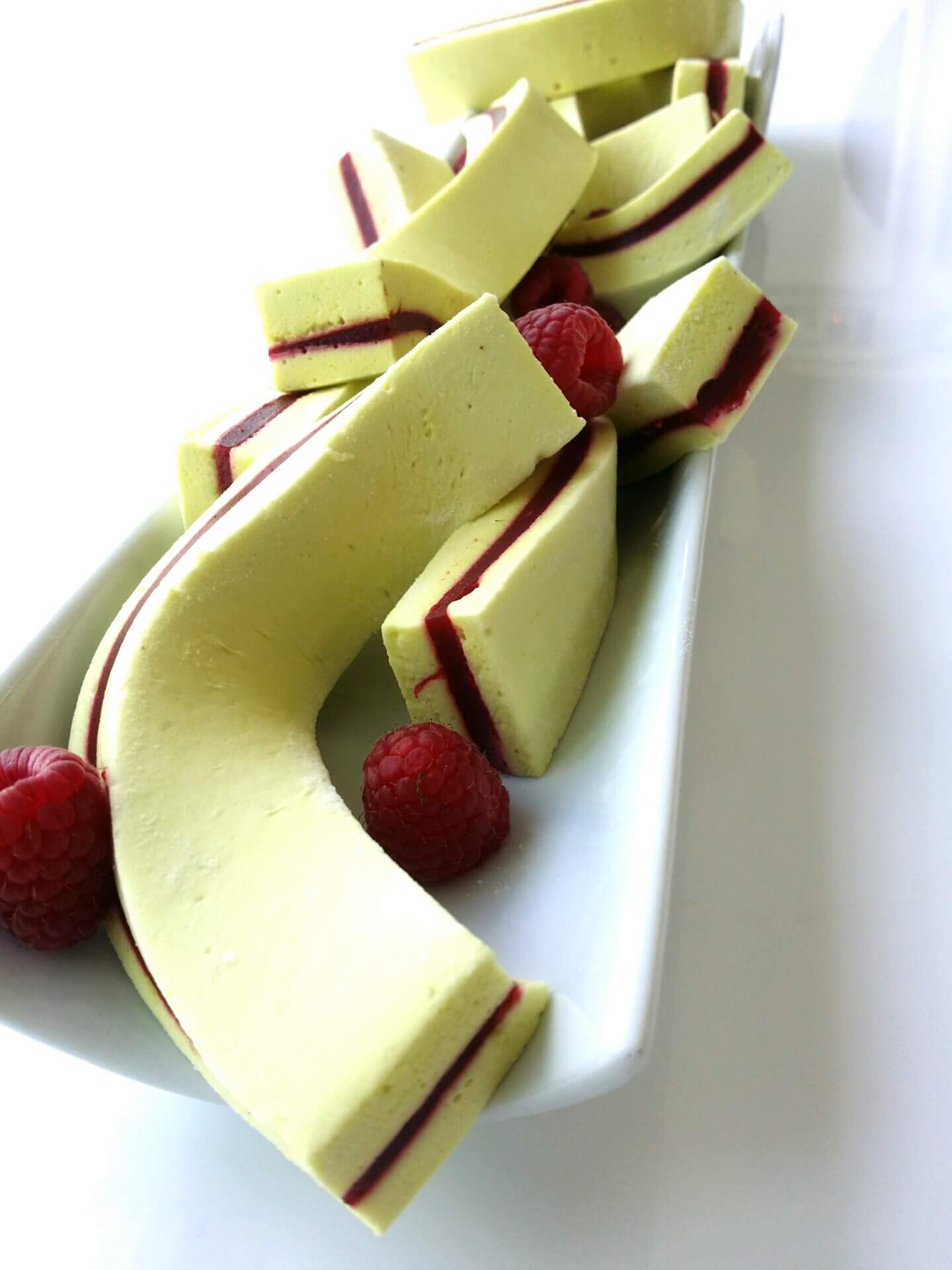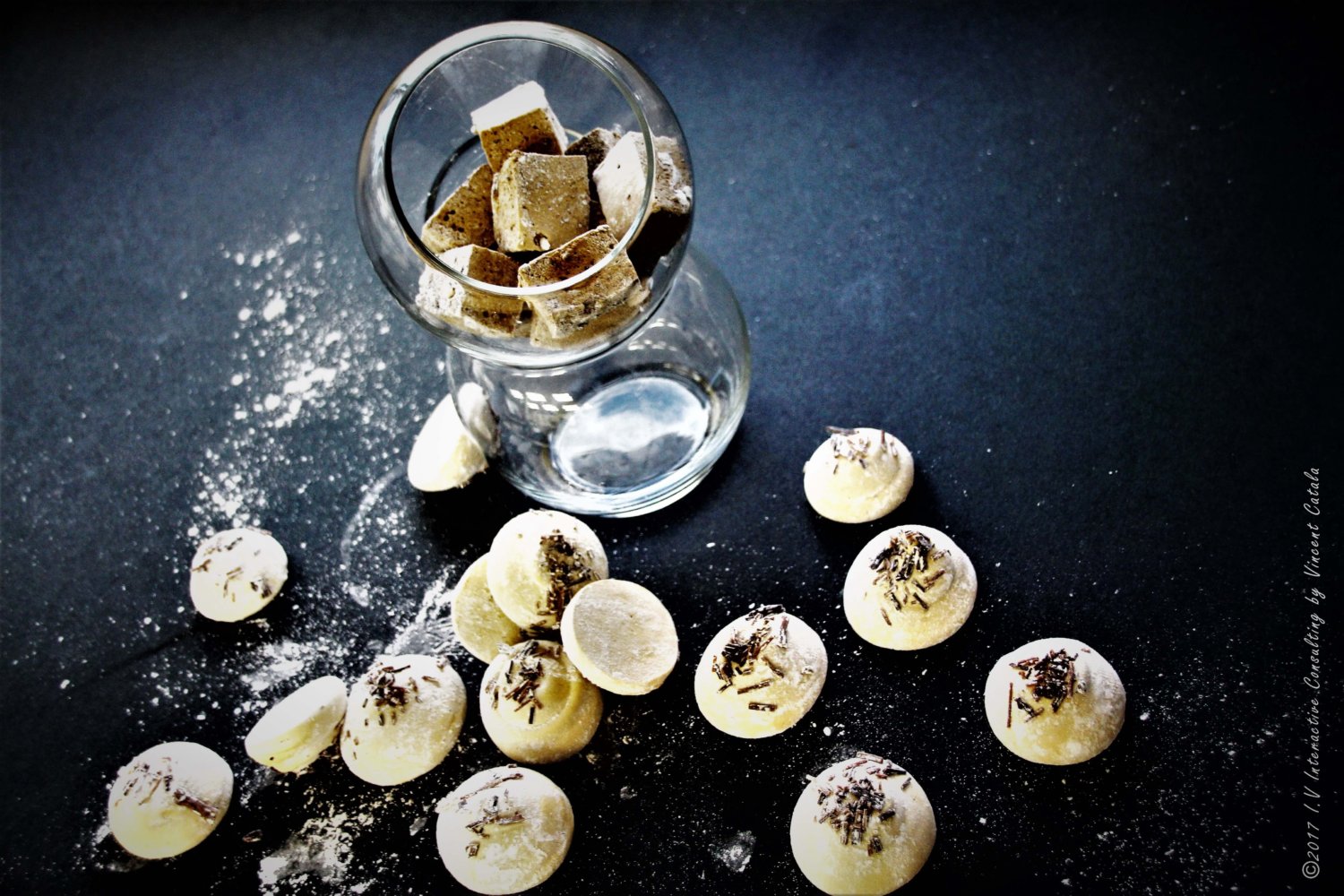The marshmallow is the French botanical name of the plant: « la mauve ». It is an unctuous and spongy candy from the confectionery / candy family.
In french, the name is Chamallows.
Very easy to achieve, I will share my recipe with my tricks as a chef. So you can make homemade giumauve / chamallows with a taste similar to those bought on the market but without its chemical aspect.
History of the marshmallow / chamallows:
Wild marsh, also called white mauve is a plant that has been found in abundance in Europe and Asia for centuries.
The mallow grows mainly in marshes or their name: marshmallows.
For a long time the mauve was used as a medicinal plant, whose virtues favored good health, and healing. Formerly the marshmallow originated from the decoction of the root of mauve, mixed with a little gum and a beaten egg to give it a solid and light. Sugar was added to make the remedy better.
From the middle of the 19th century, thanks to the invention of Alex Doumak (production process by extrusion), the mauve root no longer served as a « binding agent » in a mixture of egg white, water And corn syrup. It was from this period that these delicacies were made under the name of marshmallows.
Different type of marshmallow:
Wild marsh, also called white mauve is a plant that has been found in abundance in Europe and Asia for centuries.
The mallow grows mainly in marshes or their name: marshmallows.
For a long time the mauve was used as a medicinal plant, whose virtues favored good health, and healing. Formerly the marshmallow originated from the decoction of the root of mauve, mixed with a little gum and a beaten egg to give it a solid and light. Sugar was added to make the remedy better.
From the middle of the 19th century, thanks to the invention of Alex Doumak (production process by extrusion), the mauve root no longer served as a « binding agent » in a mixture of egg white, water And corn syrup. It was from this period that these delicacies were made under the name of marshmallows.
Tasting of marshmallows:
Marshmallow is known in its cubic, soft form approaching the texture of cotton and slightly sweet.
Marshmallows are enjoyed at all hours of the day as a treat, a sweet by children and adults.
In Europe and France, marshmallows is often eaten alone in the snack.
The marshmallow, a classic of French confectionery, is back on the scene. Many confectioners or chocolatiers use it in their desserts. For example: coated with a thin layer of crunchy chocolate, remember the bear cubs with marshmallow. Or a mini version of some pastries, such as lemon tart.
In addition to the Atlantic, Americans / Canadians eat marshmallows in different ways. The marshmallow is no longer a simple confection, it is integrated into two recipes.
The most popular way for Anglo Saxons to taste marshmallows is roasted at the end of a stick around a fire. For the more greedy it will be in the form of a small sandwich called: Smores.
The word Smore comes from the contraction of the English « Some More », « a little more ». This snack was so successful from its invention in the 1920s that it seemed impossible to settle for only one. This gourmet addiction has led them to say « Give me some more » or « I want some more ». This expression quickly became « S’more« . Since s’mores are a must in summer holidays.
A Smore is a small sandwich made up of a chamallow covered with a square of dark chocolate, stored between two graham crakers.
Grilled, in the microwave oven, or in cocktail after maceration, the marshmallow is savored for its multiple flavors, its caramelized aspect, or else its syrup. The addicts of chamallows can find it in the form of spread: fluff marshmallow. Mini marshmallows often feature topping (icing) on cupcakes, frozen cups, and hot chocolates.
Marshmallows
Fruit pulp marshmallow:
For 50 marshmallows
Ingredients:
- 150 gr of caster sugar
- 150gr invert sugar n° 1
- 100gr of fruit purée
- 63 gr of invert sugar n°2
- 62 gr of gelatin mixture (it is 7 times the volume of cold water in 1 volume of gelatin powder)
Food flavoring marshmallow:
For 50 marshmallows
Ingredients:
- 210 gr of caster sugar
- 84 gr of water
- 60gr of trimoline n ° 1
- 60gr of trimoline n ° 2
- 56gr of gelatin mix
- 4 drops per liter of food or coloring flavors
Steps:
Prepare all ingredients and utensils before starting
- Cook the syrup at 110 ° C exactly with caster sugar, invert sugar no. 1 and pulp or flavor
- In parallel, the mixed gelatin
- Emulsify the mixed gelatin with a mixer only when the syrup is at 106 ° C
- When the syrup is at 110 ° C, put invert sugar No. 2 to melt at the microwave Stir in melted invert sugar into syrup
- Incorporate the previous mixture gently into the mixer with the mixed gelatine
- Once the syrup is incorporated increase the speed of the robot to obtain an emulsified apparatus that forms with the whip a regular smooth and homogeneous ribbon Put the marshmallow / chamallow on a plate
- Sprinkle on top of your future marshmallows a time for potato starch / icing sugar Cut back a sheet of paper
- Leave to shoot 2 to 3 hours at room temperature then to put in the refrigerator one night
Tricks of chef:
- It is mandatory that all ingredients and utensils are ready before starting (prepare and grease the plate, prepare the bag socket, maryse, scissors) otherwise the marshmallows will be missed
- Greasing the plate on which the marshmallow will be poached is essential to succeed (it is indispensable)
- Wash the pan with the vinegar if not the sugar can massage
- On average for a 600W microphone it will take 40s to melt the mixed gelatin and invert sugar
- Emulsion is done at speed 6 with a Kitchenaid robot
- To obtain the ribbon it is necessary to increase to 7 then 9 the speed of the robot Kitchenaid
Marshmallow based on egg whites:
For 50 marshmallows
Ingredients:
- 80 gr of water
- 221 gr of crystal sugar
- 43 gr of glucose confectioner
- 84 gr of tempered egg whites
- 4 gr of dehydrated egg whites
- 43.5 gr of gelatin mix
Steps:
- Heat water sugar and glucose confectioner at 140 ° C
- Sparkling the different egg whites to obtain more volume
- Pour this mixture over the sparkling whites
- Go up to 4th speed, when the marshmallow is at 55 ° C add the melted gelatin
- At 44 ° C degree unhook the tank and gently incorporate and hand flavor and color
- Pour into a greased flange frame with a minimum thickness of 4cm
- Sprinkle on top of your future marshmallows a time for potato starch / icing sugar
- Cut back a sheet of paper
- Leave to shoot 2 to 3 hours at room temperature then to put in the refrigerator one night



